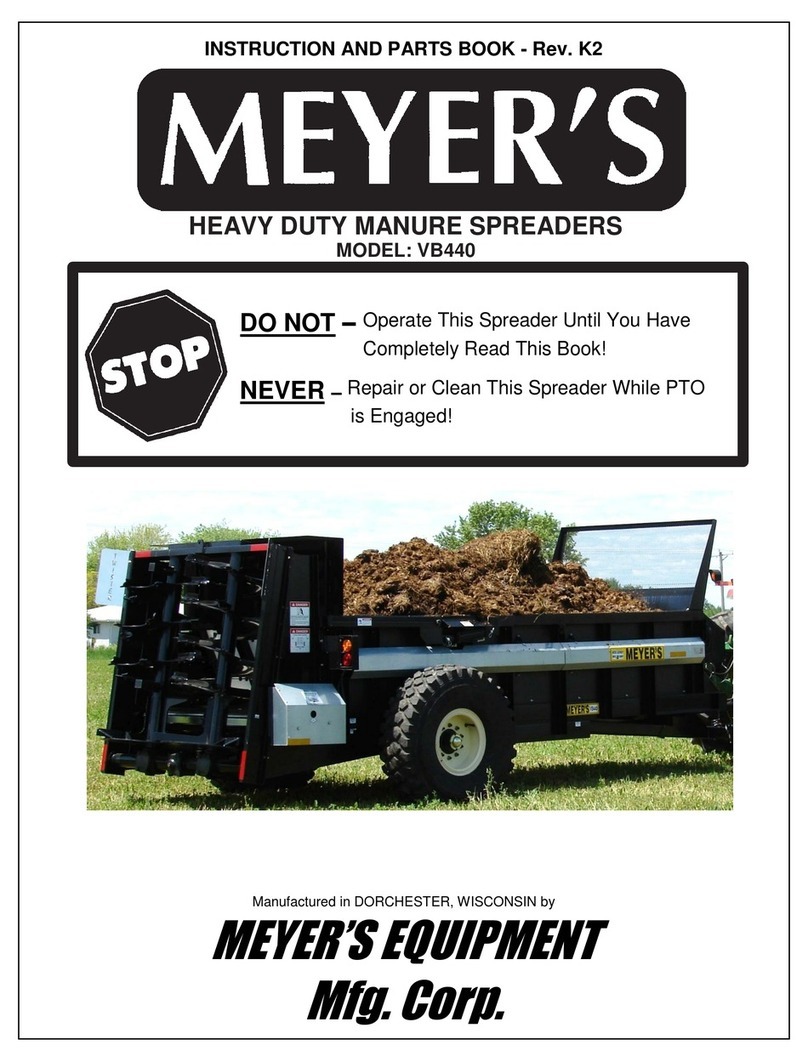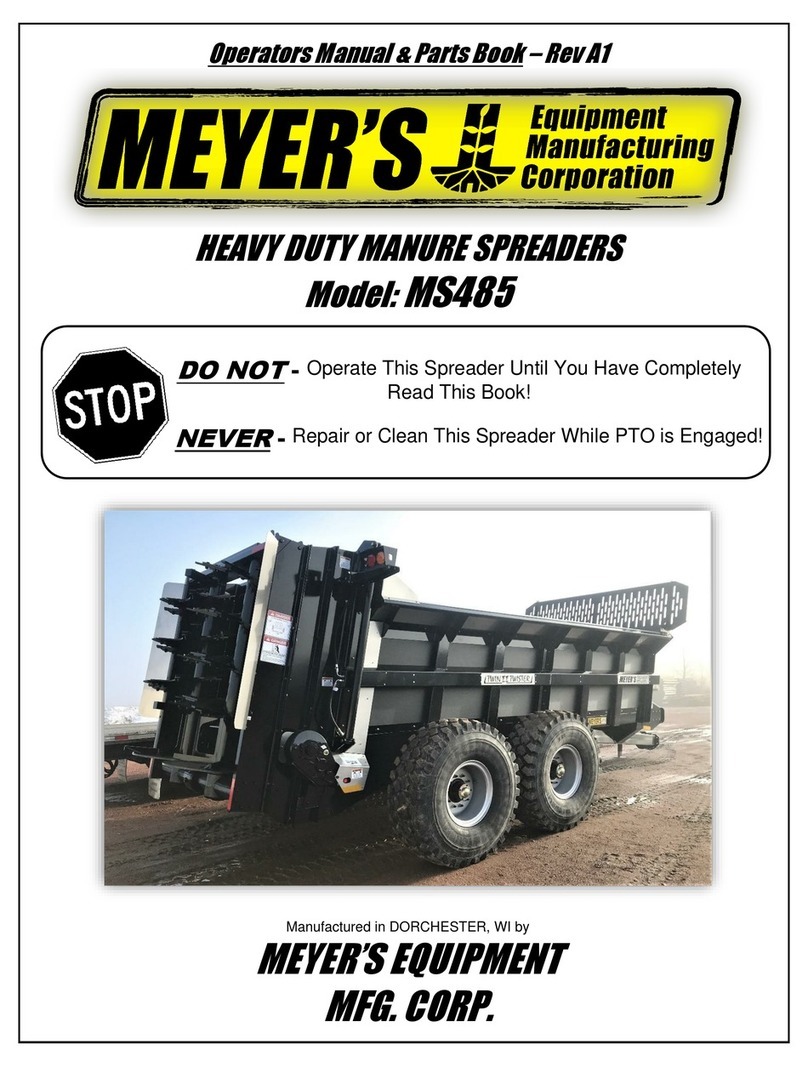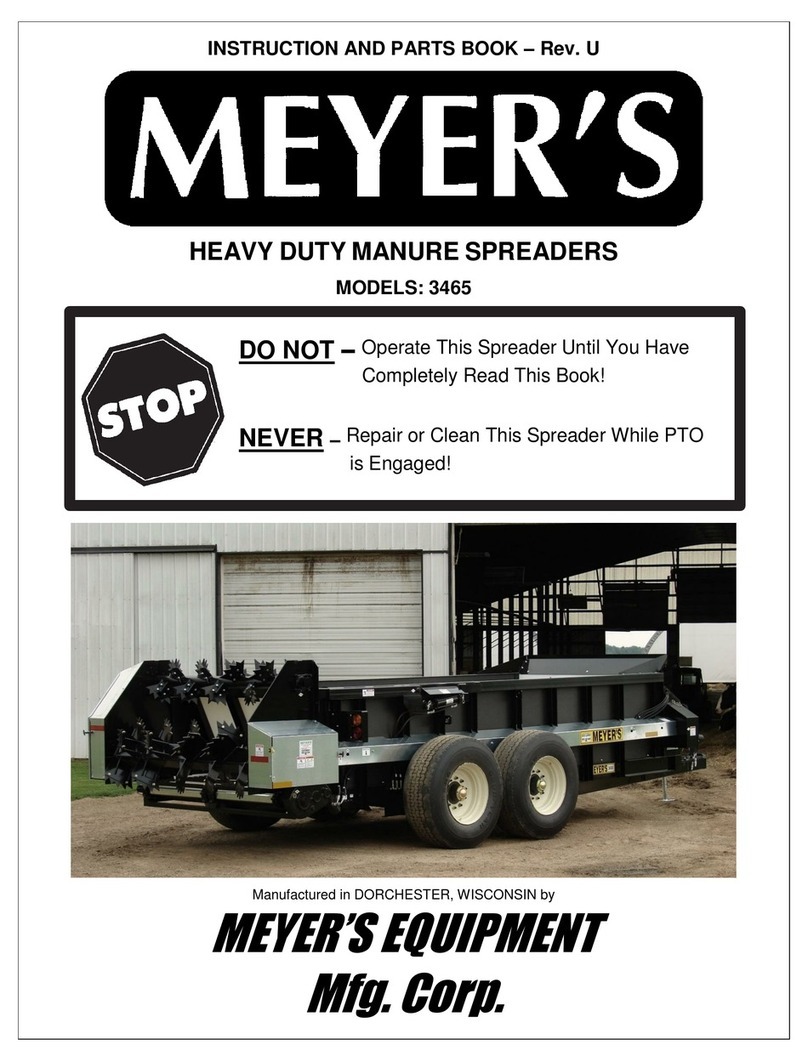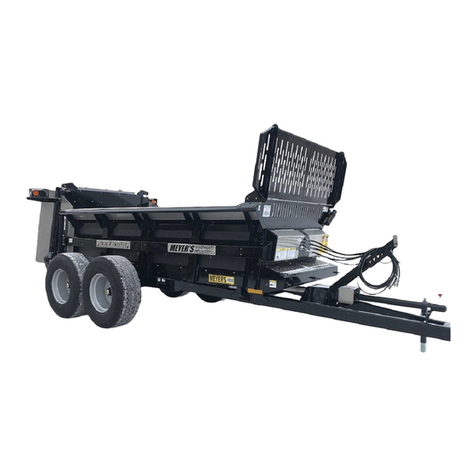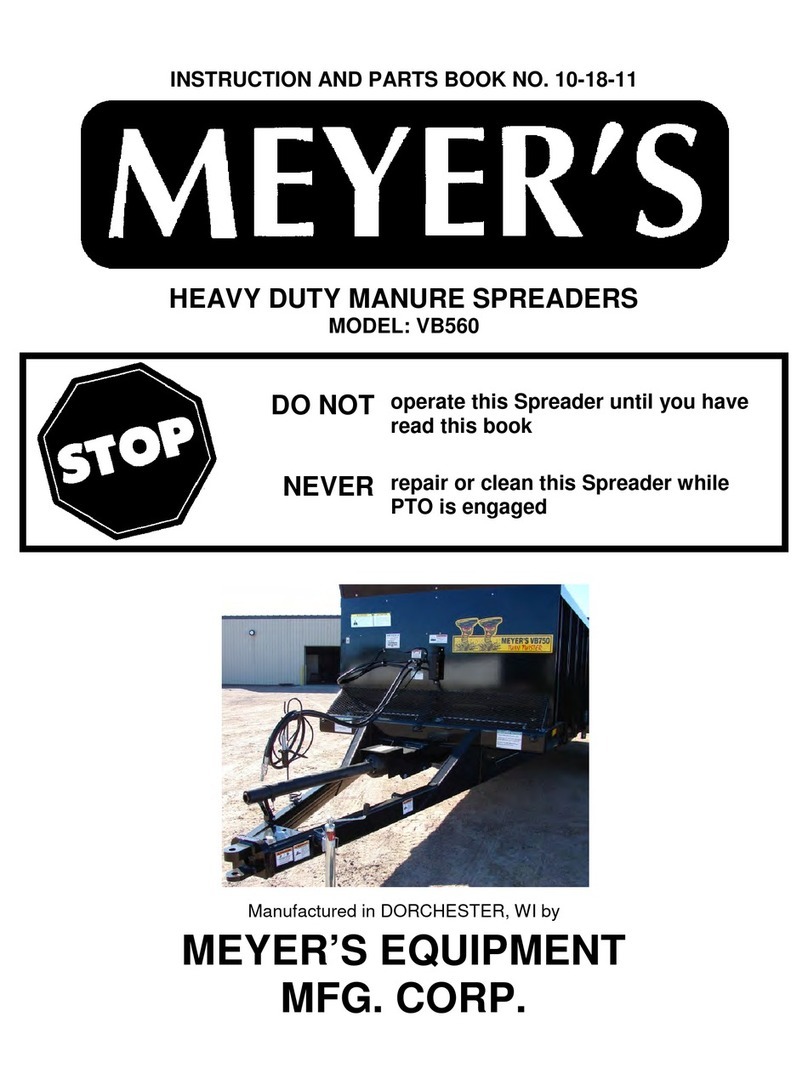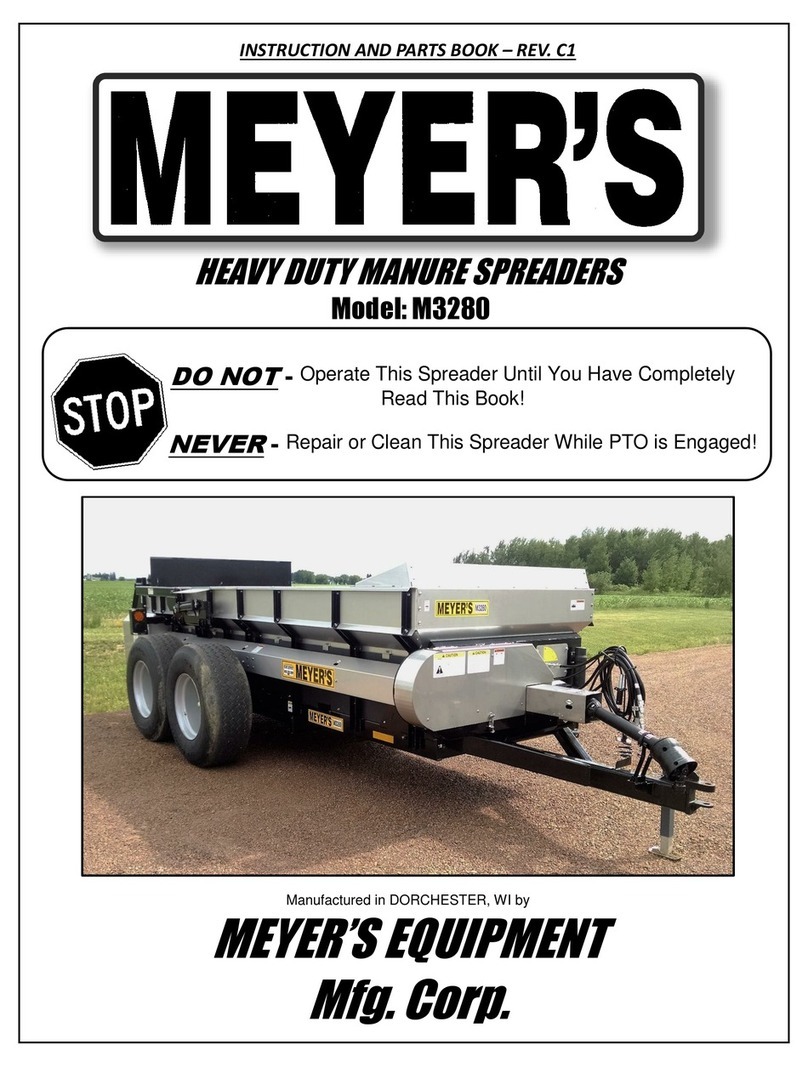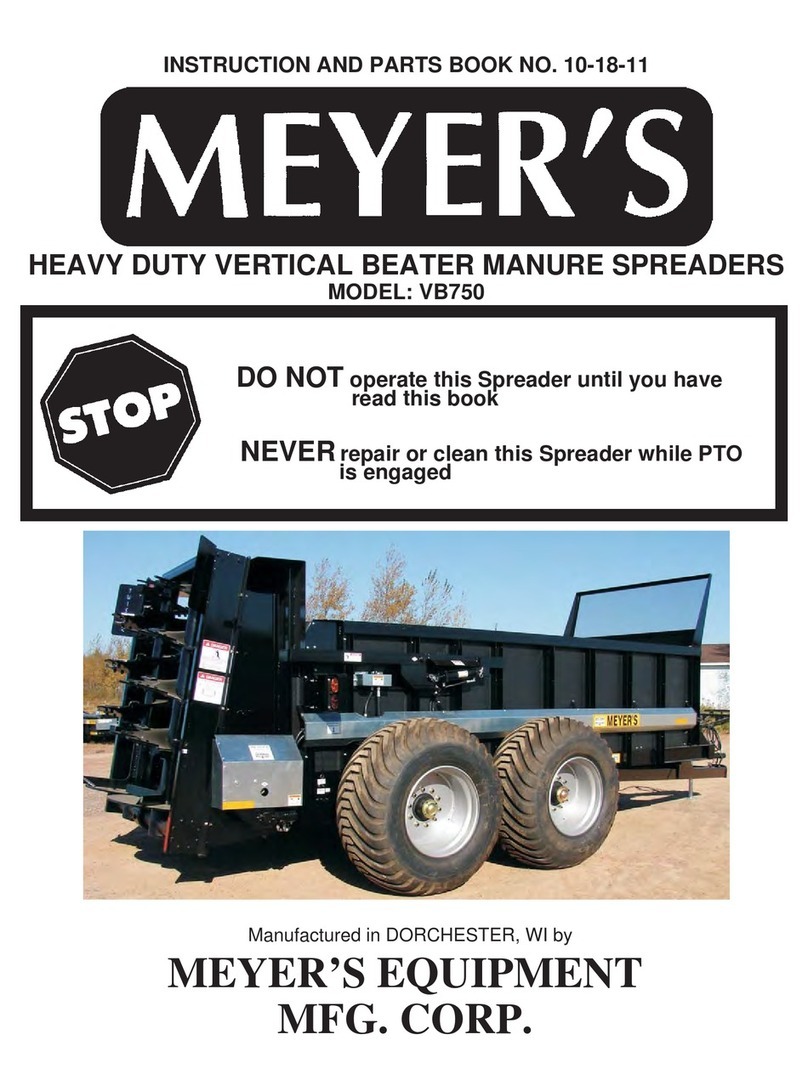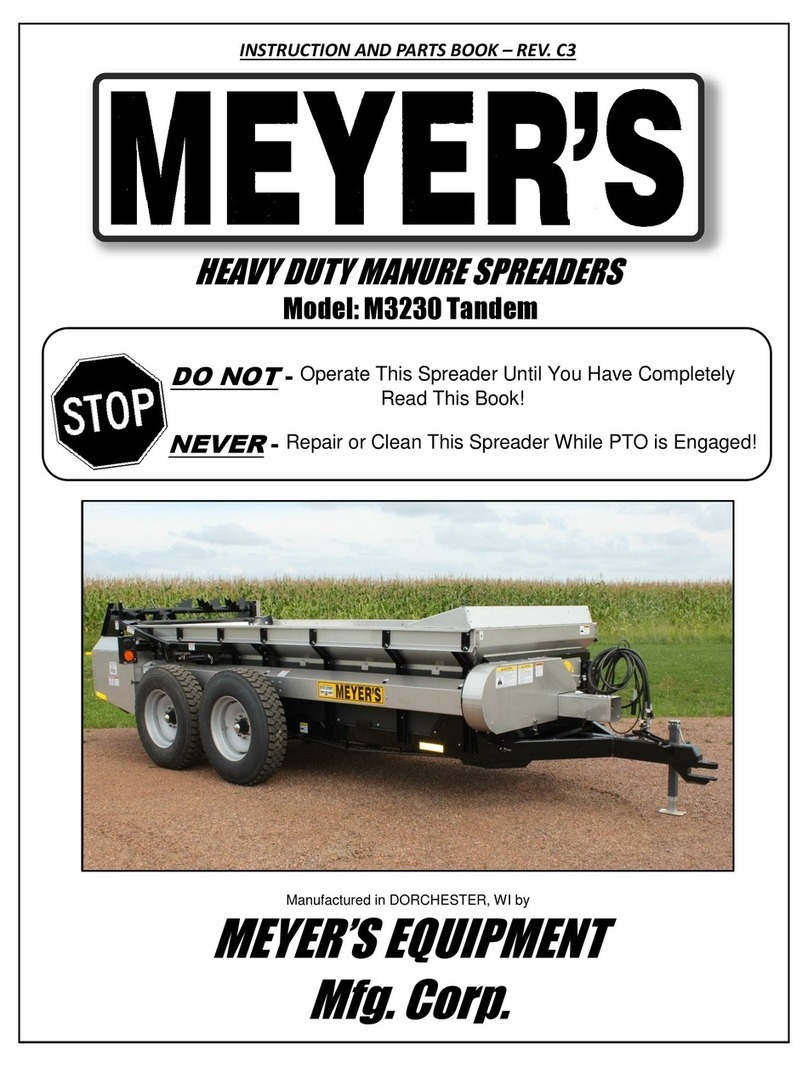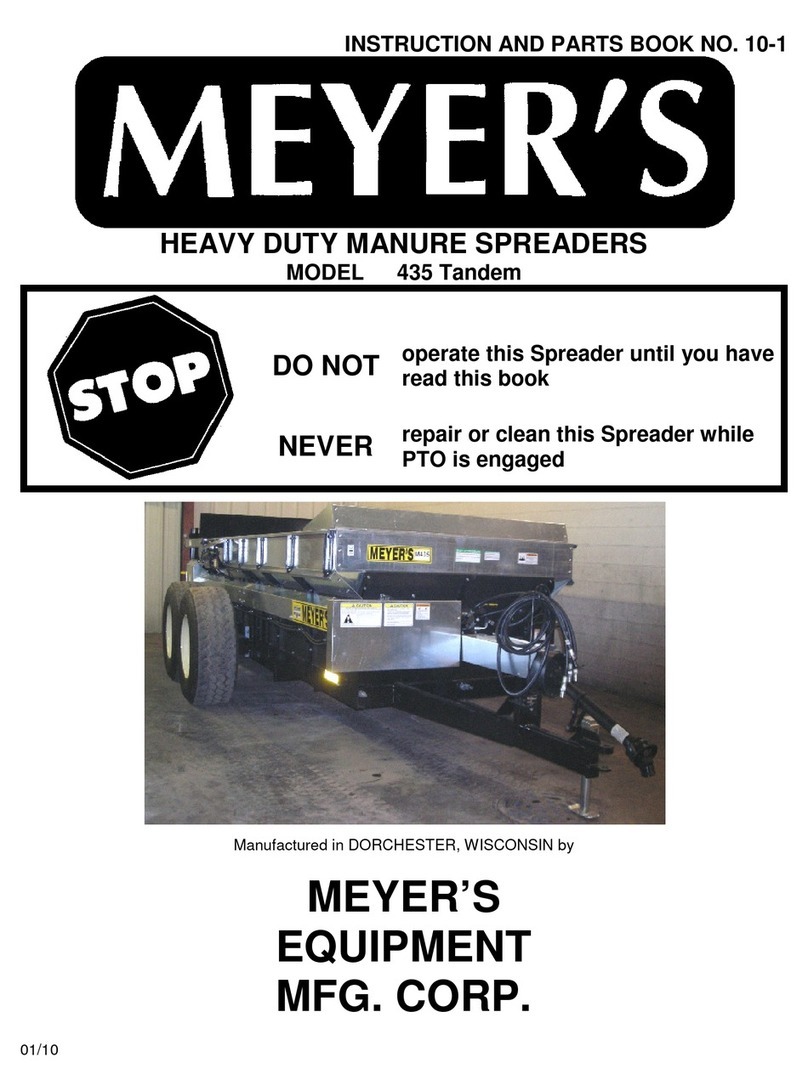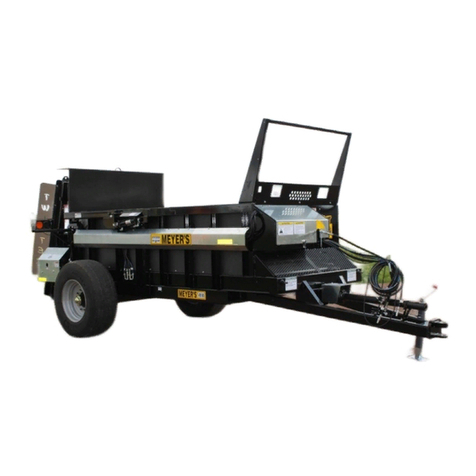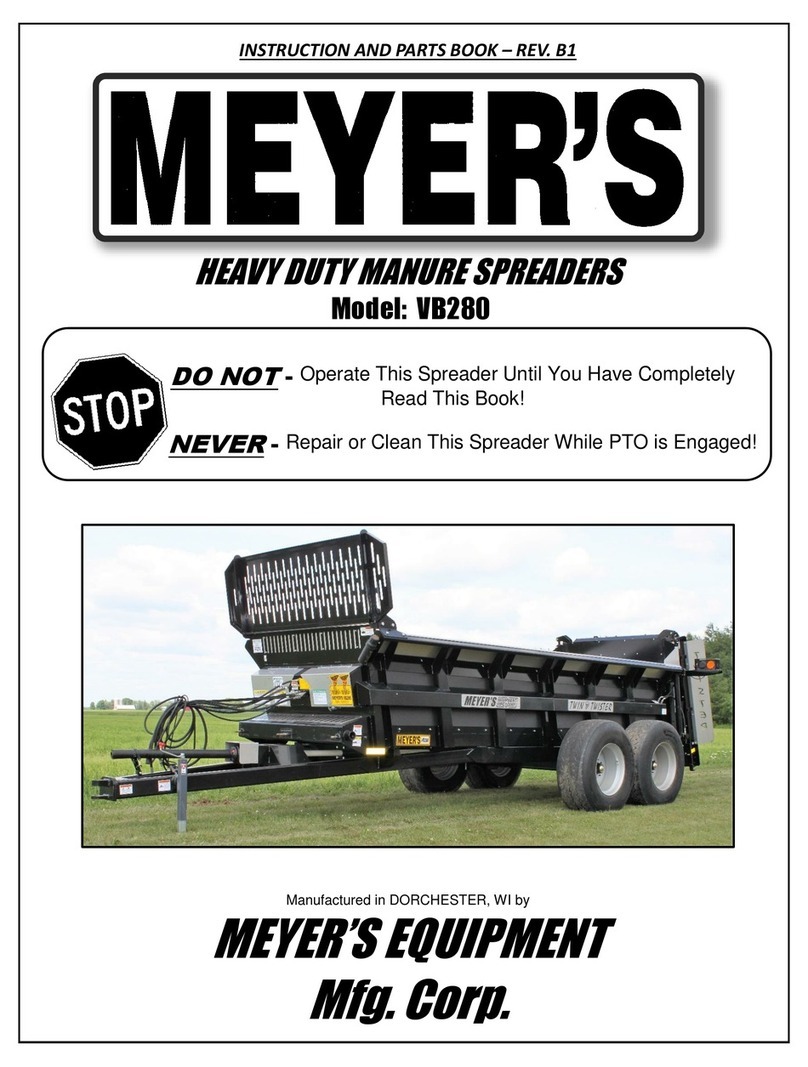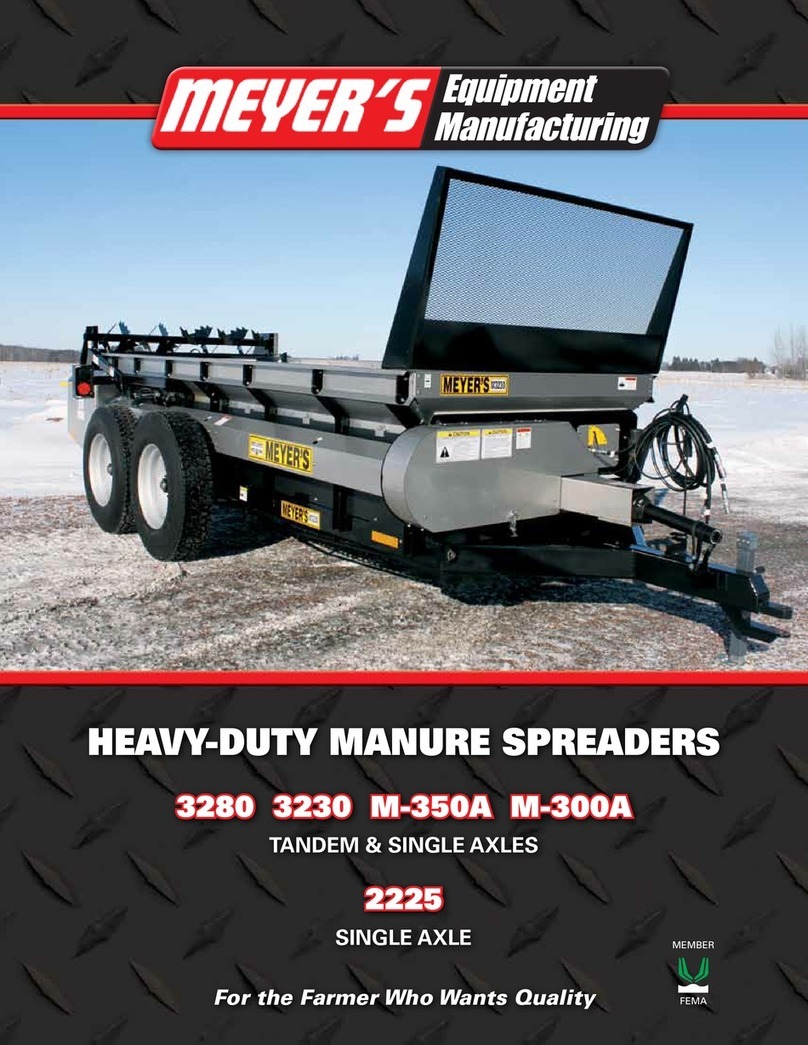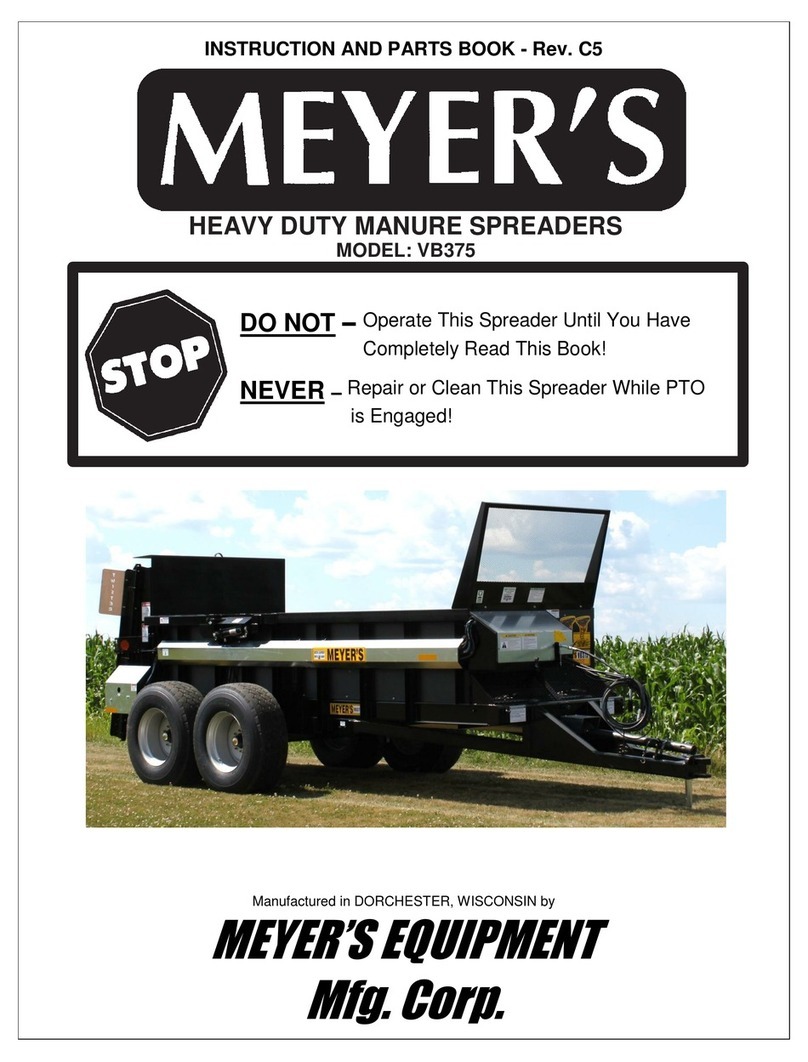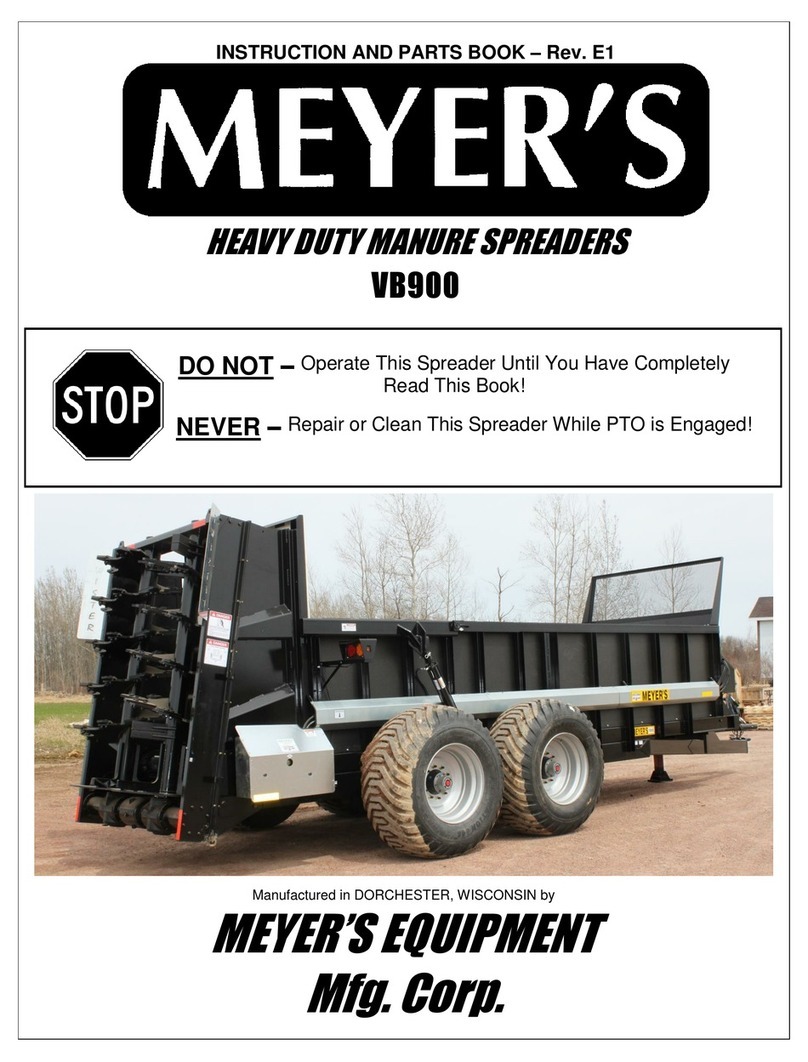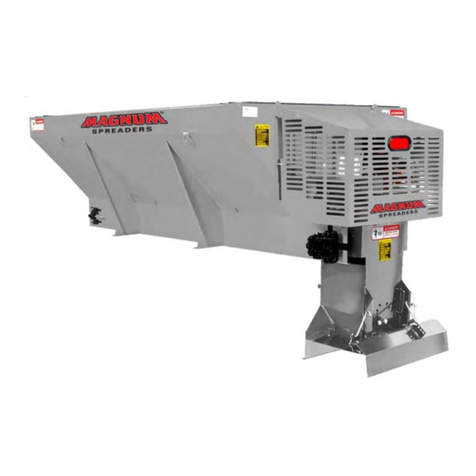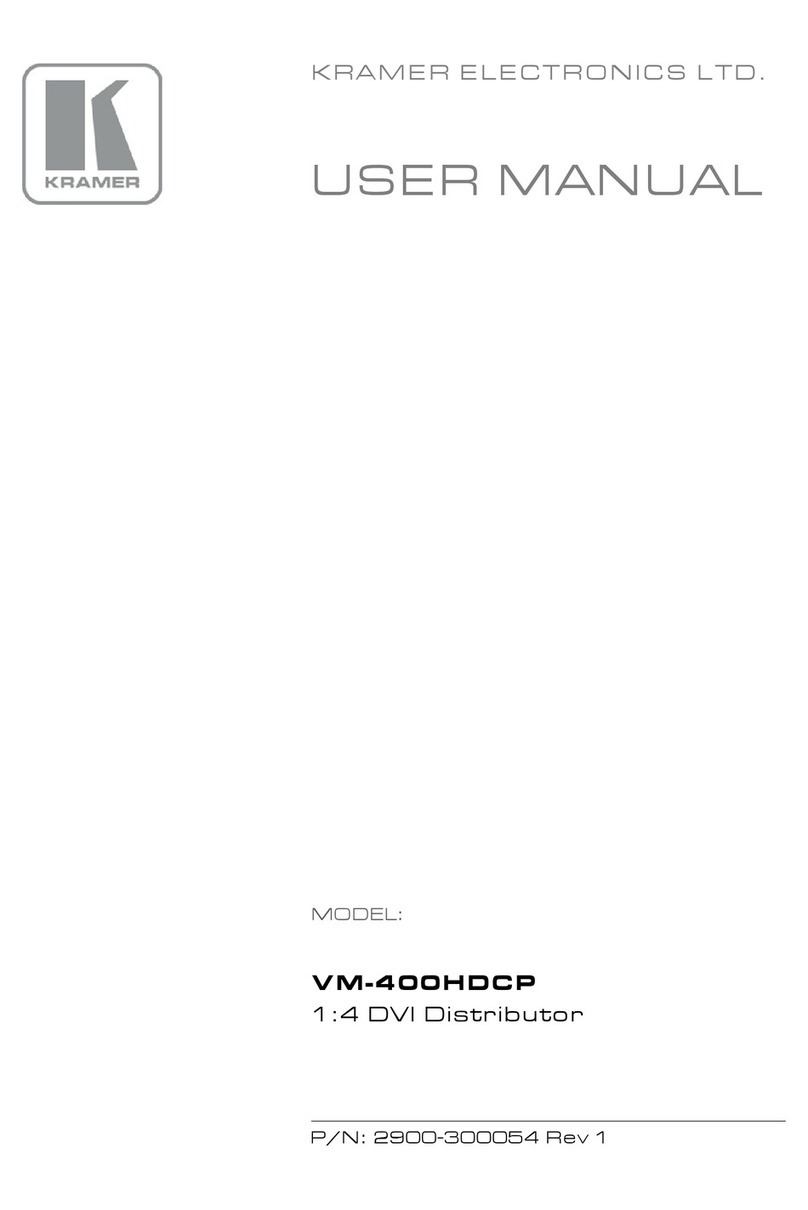
Model 390 Page 3
TABLE OF CONTENTS
INTRODUCTION ..........................................................................................................................................................2
SAFETY ........................................................................................................................................................................4
SAFETY DECALS.........................................................................................................................................................6
MANURE SPREADER SAFETY...................................................................................................................................8
MANDATORY SAFETY SHUTDOWN PROCEDURE .................................................................................................9
PRE-OPERATION ......................................................................................................................................................10
General....................................................................................................................................................................10
Tractor Hookup........................................................................................................................................................10
Tractor Requirements: .........................................................................................................................................10
Tractor Size .........................................................................................................................................................10
Tractor Towing Size Requirements: ....................................................................................................................10
Tractor Hookup ....................................................................................................................................................10
Hydraulic Apron Drive..........................................................................................................................................11
Hydraulic System.................................................................................................................................................11
Transporting ............................................................................................................................................................12
OPERATION...............................................................................................................................................................13
Loading....................................................................................................................................................................13
Unloading ................................................................................................................................................................13
Hydraulic Apron Drive..........................................................................................................................................13
Optional Fine Spread Pan ...................................................................................................................................13
Hydraulic End Gate..............................................................................................................................................14
Unhook Spreader From Tractor ..............................................................................................................................14
MANDATORY SAFETY SHUTDOWN PROCEDURE ...............................................................................................14
MAINTENANCE, LUBRICATION & ADJUSTMENTS ................................................................................................15
Cleaning And Storage .............................................................................................................................................15
Lubrication ...............................................................................................................................................................15
Shear Pin Hubs .......................................................................................................................................................17
Adjustment ..............................................................................................................................................................17
Apron Chain.........................................................................................................................................................17
Roller Chain Adjustment......................................................................................................................................17
REPAIR PARTS..........................................................................................................................................................18
Main Frame And Box Parts .....................................................................................................................................18
Axle, Wheels, Spindles And Related Parts .............................................................................................................20
PTO Shaft Assembly (Used On All Models)............................................................................................................21
Front and Side Drive Shaft and Related Parts........................................................................................................22
Apron And Beater Drive Clutch And Related Parts.................................................................................................24
5490-0672 Gear Box Complete 540 RPM Beater Drive Gearbox ..........................................................................26
5490-0685 Gear Box Complete 1000 RPM Beater Drive Gearbox ........................................................................28
E01300W Gear Box Complete 540 RPM Beater Drive Gearbox............................................................................30
4190-0532 Gear Box Complete 1000 RPM Beater Drive Gearbox ........................................................................32
Hydraulic System Parts ...........................................................................................................................................34
End Gate Hydraulic Piping for Optional End Gate ..................................................................................................36
Apron Drive Gear Box .............................................................................................................................................38
Apron Drive Hydraulic Motor ...................................................................................................................................40
Apron And Related Parts.........................................................................................................................................42
Beaters and Related Parts ......................................................................................................................................44
Optional Fine Spread Pan and Related Parts .........................................................................................................46
Hydraulic End Gate & Related Parts.......................................................................................................................47
End Gate Hydraulic Cylinder ...................................................................................................................................48
Jack .........................................................................................................................................................................49
LIMITED WARRANTY STATEMENT .........................................................................................................................50

